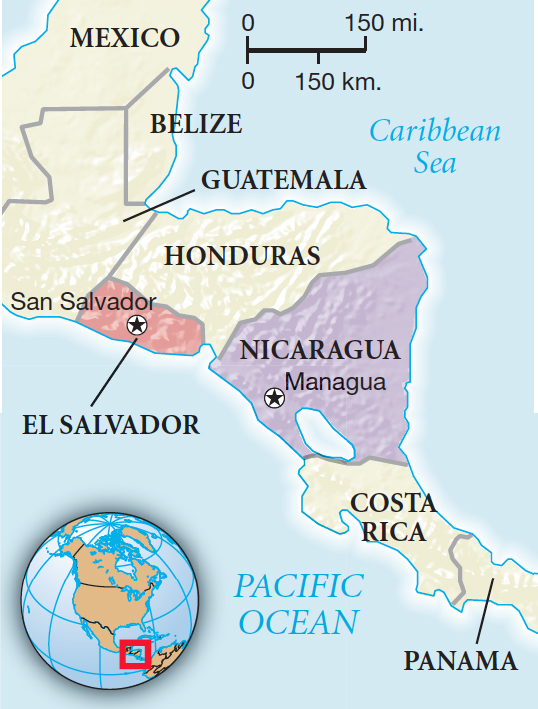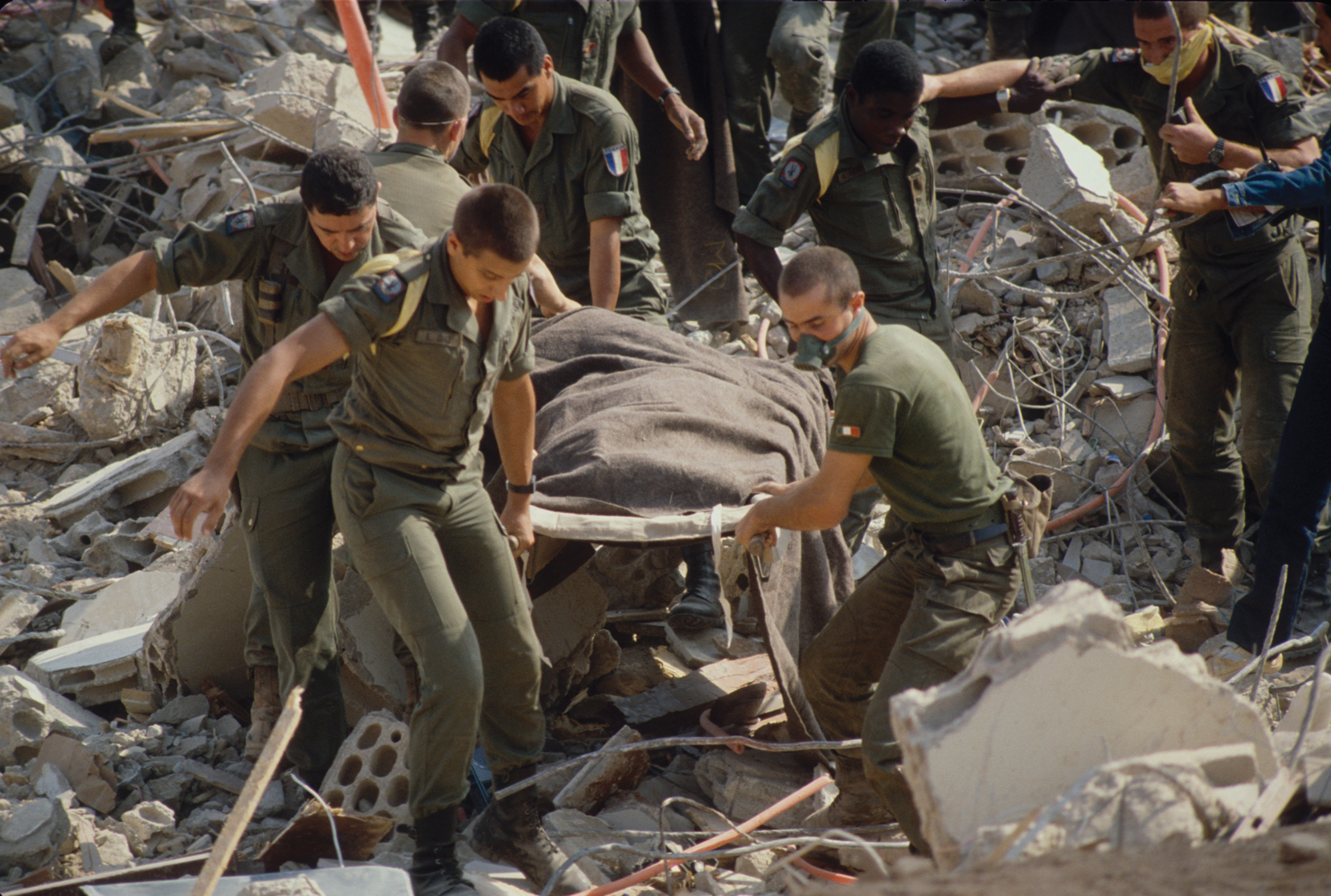Militarization and Interventions Abroad.
Printed Page 844 Chapter Chronology
Militarization and Interventions Abroad. Reagan expanded the military with new bombers and missiles, an enhanced nuclear force in Europe, a larger navy, and a rapid-deployment force. Throughout Reagan's presidency, defense spending averaged $216 billion a year, up from $158 billion in the Carter years and higher even than in the Vietnam era.
Reagan startled many of his own advisers in March 1983 by announcing plans for research on the Strategic Defense Initiative (SDI). Immediately dubbed "Star Wars" by critics who doubted its feasibility, the project would deploy lasers in space to destroy enemy missiles before they could reach their targets. Such a defense would allow the United States to strike first and not fear retaliation. The Soviets reacted angrily because SDI violated the 1972 Antiballistic Missile Treaty and because they would have to make huge investments to develop their own Star Wars technology. Subsequent administrations continued to spend billions on SDI research without producing a working system.
Strategic Defense Initiative (SDI)
Project launched by President Reagan to deploy lasers in space that would destroy enemy missiles before they could reach their targets. The Soviets protested that it violated the 1972 Antiballistic Missile Treaty. The project cost billions of dollars without producing a working system.
Reagan justified the military buildup and SDI as a means to negotiate with the Soviets from a position of strength, but he provoked an outburst of pleas to halt the arms race. In 1982, a rally demanding a freeze on additional nuclear weapons drew 700,000 people in New York City. That same year, the National Conference of Catholic Bishops issued a strong call for nuclear disarmament. Hundreds of thousands demonstrated across Europe, stimulated by fears of new U.S. missiles scheduled for deployment there in 1983.

The U.S. military buildup was impotent before the growing threat of terrorism by non-state organizations that sought political objectives by attacking civilian populations. Terrorism had a long history throughout the world, but in the 1970s and 1980s Americans saw it escalate in the Middle East, used by Palestinians after the Israeli occupation of the West Bank and by other groups hostile to Western policies. The terrorist organization Hezbollah, composed of Shiite Muslims and backed by Iran and Syria, arose in Lebanon in 1982 after Israeli forces invaded that country to stop the Palestine Liberation Organization from using sanctuaries in Lebanon to launch attacks on Israel.
Reagan's effort to stabilize Lebanon by sending 2,000 Marines to join an international peacekeeping mission failed. In April 1983, a suicide attack on the U.S. Embassy in Beirut killed 63 people, and in October a Hezbollah fighter drove a bomb-filled truck into a U.S. barracks there, killing 241 Marines. The attack prompted the withdrawal of U.S. troops, and Lebanon remained in chaos, while incidents of murder, kidnapping, and hijacking by various Middle Eastern extremist groups continued.
Following a Cold War pattern begun under Eisenhower, the Reagan administration sought to contain leftist movements across the globe. In October 1983, 5,000 U.S. troops invaded Grenada, a small Caribbean nation where Marxists had staged a successful coup. In Asia, the United States quietly aided the Afghan rebels' war against Afghanistan's Soviet-backed government. In the African nation of Angola, the United States armed rebel forces against the government supported by the Soviet Union and Cuba. Reagan also sided with the South African government, which was brutally suppressing black protest against apartheid, forcing Congress to override his veto in order to impose economic sanctions against South Africa.

Administration officials were most fearful of left-wing movements in Central America, which Reagan claimed could "destabilize the entire region from the Panama Canal to Mexico." When a leftist uprising occurred in El Salvador in 1981, the United States sent money and military advisers to prop up the authoritarian government. In neighboring Nicaragua, the administration secretly aided the Contras, an armed coalition seeking to unseat the left-wing Sandinistas, who had toppled a long-standing dictatorship.